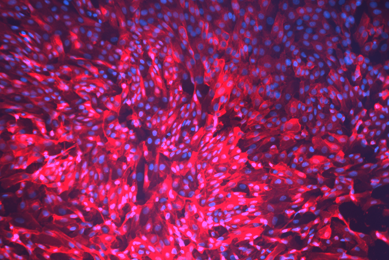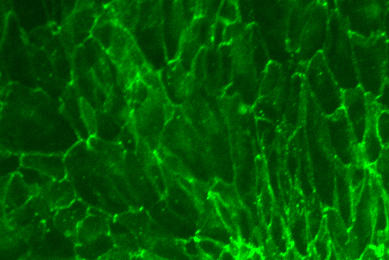Novel Immortalized Pulmonary Artery Endothelial Cell Line Recapitulates the Characteristics of Primary Cells
SOT 63rd Annual Meeting and ToxExpo 2024
Salt Lake City, Utah, United States
March 13, 2024Abstract
Background
Primary endothelial cells have been used as in vitro models to study cardiovascular diseases and cancer development. However, cellular senescence and donor availability restrict the potential usefulness of primary endothelial cells. Cell immortalization technology enables the development of new cell models that represent normal physiology while gaining the capability of an extensive lifespan. The objective of this study is to develop an immortalized pulmonary artery endothelial cell line that retains the functional characteristics of primary cells.
Methods
In this study, we generated a clonal cell line that was immortalized by stably expressing the human BMI1 gene in normal human primary pulmonary artery endothelial cells. Cell morphology, growth rate, cell surface biomarkers, and bio-functions were analyzed to compare the parental primary cell line and the immortalized cell line.
Results
The newly established HPAEC-BMI1 (ATCC CRL-4065) cell line has a similar cell growth profile and cell doubling time as the parental primary cells. The cell line had been cultured for over 200 days to ensure it is fully immortalized. In addition, this cell line has been cultured continuously for additional 38 population doublings after master cell banking. There’s no signs of replicative senescence or growth rate change. The HPAEC-BMI1 cells have a near-diploid karyotype and an endothelial-like morphology. CD31 expression and AcLDL uptake features were maintained. HPAEC-BMI1 cells also form capillary-like tubes on a basement membrane matrix (ATCC ACS-3035). To test if the cell line can be a predictive model, we used a well-known angiogenesis inhibitor in cell-based assays. We found sunitinib could suppress HPAEC-BMI1 cells tube formation and migration in a dose-dependent manner.
Conclusions
The fully immortalized HPAEC-BMI1 cell line presents a novel cell model that avoids the limitations of primary cells while still retaining the functional characteristics of primary pulmonary artery endothelial cells. It provides a valuable tool for angiogenesis research, drug screening, and toxicology studies.
Download the poster to learn about the development of the HPAEC-BMI1 cell line.
DownloadPresenter
Xiangshan Zhao, PhD
Senior Scientist, Cell Biology R&D, ATCC
Xiangshan Zhao, PhD, is a Senior Scientist at ATCC. He has extensive experience in cell line development and cell-based assay development. Dr. Zhao leads the Immortalized Primary Cells program developing innovative immortalized cell lines for research, drug screening, cell therapy, and toxicology studies.
Featured resources

Toxicology
ATCC provides the tools you need to explore lung, skin, cardiovascular, gastro-enteric, liver, kidney, and neural toxicity. Our cells, media, and reagents help in toxicology research to identify responses to environmental toxins or to screen pharmaceutical compounds.
MorePrimary Cells
Traditional attention to quality, research, and science makes ATCC your most reliable source for primary cells to support cutting-edge research in tissue biology, stem cell biology, and regenerative medicine.
More
hTERT-immortalized Cells
Human telomerase reverse transcriptase (hTERT) immortalized primary cells represent a breakthrough in cell biology research that combines the in vivo nature of primary cells with the traditional cell line's ability to survive continuously in vitro.
More